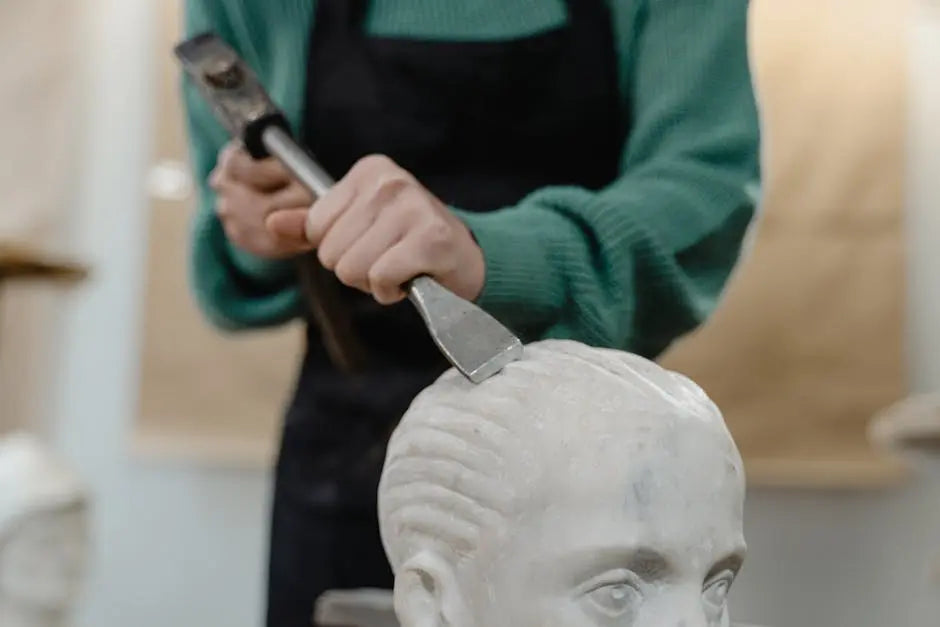My Cart
Your Cart is Currently Empty
FREE SHIPPING ON ALL ORDERS ABOVE $500


Choosing the right stone for a sculpture is crucial. The stone not only influences the aesthetic appeal but also determines the ease of shaping and carving. In this blog, we will explore different types of stones used in sculpture-making, helping you find the perfect match for your artistic vision.
Before choosing a stone, it’s important to understand its properties, such as hardness, grain, and workability. Each stone has unique features that can affect your sculpting process. Hardness affects how easily detail can be carved, grain influences the texture and finish, and workability determines how smoothly a tool can cut through the material.
For those new to stone sculpting, it’s crucial to consider how different stones behave under tools. Softer stones might be more forgiving for beginners, allowing for corrections and adjustments. In contrast, harder stones require precision from the outset but reward artists with durable creations.
Marble is a popular stone for sculptures due to its fine grain and workability. It’s ideal for intricate detailing and has been the choice of many renowned artists throughout history. Michelangelo’s David, for instance, is a testament to marble’s elegance and the exquisite detail it can achieve.
Its natural translucence allows artists to play with light and shadow, enhancing the realism of human forms and other detailed elements.
For professional sculptors considering different materials, marble often tops the list for sculptures intended for both classic and contemporary art installations.
Known for its sturdiness, granite is perfect for outdoor sculptures. It’s much harder to carve but offers longevity and strength, making it a preferred choice for many modern sculptures.
Granite’s resistance to weathering means it retains its polish for decades, even when facing harsh climates. This durability makes it ideal for public installations and monuments, ensuring they withstand the test of time.
Alabaster is a softer stone that’s easy to carve, perfect for beginners or those looking to create smooth, flowing designs. However, it’s more fragile and better suited for indoor displays.
This stone allows artists to craft symmetrical designs with ease, making it a favorite among sculptors who focus on detailed and delicate works.
Limestone is a versatile material that balances durability and workability. It’s accessible and relatively easy to carve, making it a favorite for many artists.
In the realm of architecture, limestone has been used historically for grand structures and detailed reliefs due to its carvability and longevity.
Soapstone is incredibly soft and easy to mold, which makes it ideal for intricate details. It’s a great option for both beginners and professionals alike.
Despite its softness, soapstone holds up well under tools, allowing for smooth curves and elaborate designs without the risk of chipping.
Ultimately, the best stone for your sculpture depends on your personal preferences, the tools at your disposal, and the level of detail you wish to achieve. Experiment with different stones to find the one that best suits your style and needs. To learn more about my artistic creations or to get inspiration for your next sculpture project, visit my homepage.